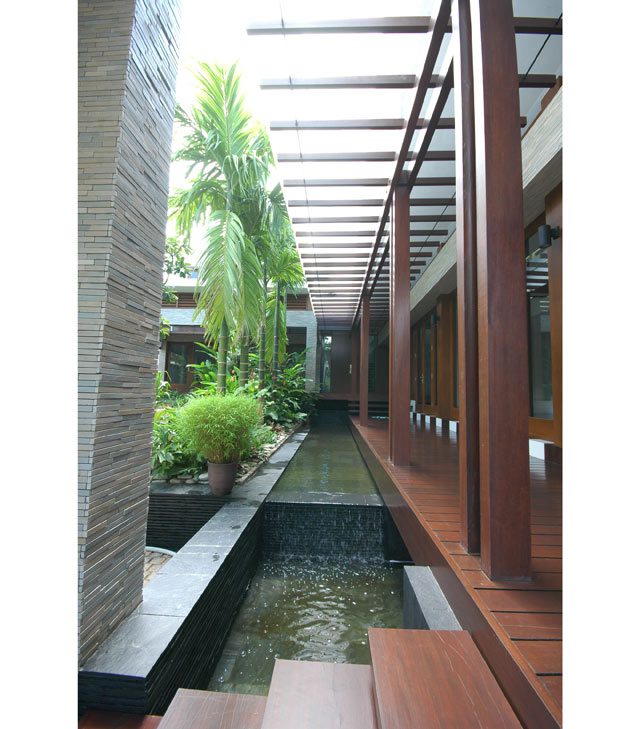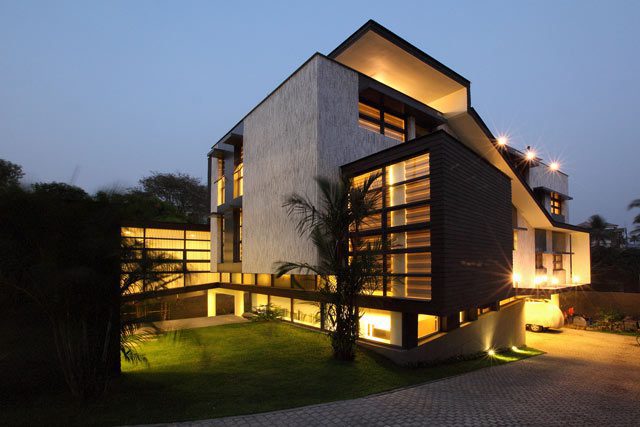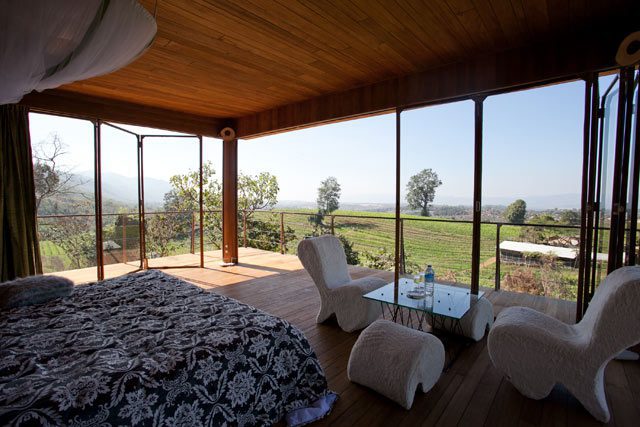With plenty of green space and a wealth of built heritage, Yangon has the potential to become a model of sustainable development
By Liam Aran Barnes
The oppressive afternoon heat of a typical Myanmar dog day accompanies a band of longyi-clad construction workers as they make their way through the gridlocked boulevards of Yangon, bound for one of the many building sites now found throughout Myanmar’s largest city. Although it remains underdeveloped compared to regional counterparts, Yangon’s low-rise skyline, dominated by the iconic Shwedagon Pagoda, is, for better or worse, evolving.

Photo by Spine Architects Yangon
Myanmar’s much-publicised property boom shows no signs of slowing as the country’s economy continues to overcome decades of stagnation. Propelled primarily by the influx of overseas businesses and a dearth of good-quality commercial and residential property, prices have soared in the past two years.
Asking prices for the finite Grade A office space currently on offer are now more expensive than in Manhattan – in some cases, rents recently surpassed $1,000 per square-metre per annum, according to property agent Scipio Services – and with the majority of the pipelined projects not due for completion until 2015, the upward trend is set to continue in both the commercial and residential markets.
“Few world-class business towers exist in Yangon, resulting in fierce competition for space among organisations,” said Brett Miller, managing director of Scipio. “Organisations that choose not to afford the business towers have often opted to find second-tier hotels or have leased large, walled residences.”
One project set to alleviate demand will be December Construction Company’s Shwe Gone Office and Apartment Tower. The mixed-use tower will stand 126 metres high and is slated, upon completion, to be the country’s tallest building. Yet the firm is not alone in its pursuit of the Yangon sky. Myanmar’s largest conglomerate, Asia World – founded by the infamous and recently deceased drug baron Lo Hsing Han – has been granted a permit to build a tower in the city’s embassy district, while many more developers are expected to follow suit.

Photo by Spine Architects Yangon
A number of existing properties will also have their capacities expanded to cater to the growing business community, such as the landmark Traders Hotel, which broke ground last November on a 20-storey extension that will comprise office and retail space.
With such high demand for international-standard property, particularly in the city centre, the issue of how to address the area’s many crumbling colonial buildings – of which Yangon boasts Southeast Asia’s largest collection – has become a major talking point. At the Yangon Urban Development Conference held earlier this year, delegates from around the world met to discuss not only the city’s future, but also ideas on how to preserve its unique heritage.
“Rehabilitating Yangon’s historic buildings and using green ideas to do so could save a lot of energy and costs over time,” said Miller. “It has been done in other countries, preserving the historic character while gaining efficiencies and long-term cost savings without loss of appearance.”
Even with the addition of new developments and restoration and expansion of existing properties over the next few years, Yangon will remain behind major cities around Southeast Asia in terms of infrastructure for some time. It does, however, have the opportunity to learn from the mistakes – namely shoddy urban planning and a lack of adherence to green planning policies – that now hinder metropolises such as Bangkok and Jakarta.
While the concept of sustainable planning and building is still in its infancy, a handful of developers and architects with an eye on the future have started to embrace green technology in Myanmar.
Spine Architects, a Yangon-based architectural firm founded by husbandand wife team Stephen Zawmoe and Amelie Chai, has embarked on a number of small-scale high-end developments around the city in recent years, incorporating elements of sustainable design.
“In Myanmar we have the opportunity to integrate both sustainability and design that incorporate green elements in the form of plants and landscape,” said Chai, a graduate of New York City’s prestigious Columbia University Graduate School of Architecture, Planning and Preservation. “The tropical climate lends itself more readily to features such as green walls and rooftops, which serve to provide a positive psychological impact as well as help reduce heat gains and condition the air. We work to bring these elements into our projects.”
Spine also tries to incorporate what Chai refers to as “passive forms of sustainable design” into its projects, such as studying the orientation of building façades to reduce areas of heat gain, providing cross-ventilation to reduce reliance on mechanical air conditioning, and utilising various recycled construction materials.
Yet Myanmar, as with many countries in the region, faces a number of obstacles in implementing the concept of sustainable building. Although Yangon boasts an abundance of green space and lacks major developments, construction costs, in addition to limited access to materials and technology, remain barriers to harnessing its green potential.
“The key to the development of green building in Myanmar would be utilising existing low-cost local materials such as brick, renewable wood species and stone to create designs that, due to their form, orientation and features, adapt to the heat and high humidity of the country,” Chai explained. “Another important step is to limit the extent of new building lot coverage in order to maintain as much as possible [of the] existing green space. In terms of percentage of green space and green infrastructure, Singapore ranks among the highest in Southeast Asia, and with Myanmar’s close ties to Singapore, exchange of knowledge and expertise in this area is possible.”

Photo by Spine Architects Yangon
Due to limited space and an ever-increasing population, Singapore has had to tackle environmental issues head on over the past couple of decades. In the process, it has become a regional pioneer in the field of sustainable construction and green building. This month will see the city-state’s green conference season kick off, with various events – the annual Sustainable Building Conference, Build Eco Xpo Asia and the International Green Building Conference – set to take place at Marina Bay Sands between September 9 and 13.
Industry experts and guest speakers from around the world will attend the five-day event in order to highlight the necessity for eco-friendly construction and attempt to raise awareness of the benefits of going green, according to Tai Lee Siang, president of the Singapore Green Building Council.
“What can be learnt from Singapore is our unique situation to deal with acute environmental challenges within a short span of time and space,” said Tai Lee Siang. “Through such a compressed process, many lessons and learning points can be magnified. On these two fronts, Singapore can certainly share some of the lessons learnt in going green, yet every city will have to formulate their
respective strategies, due to distinctively different socio-economic and environmental contexts.”
It remains to be seen whether developers and architects in Yangon are prepared to take advantage of the city’s existing green space and underdevelopment. Given the track record of neighbours such as Bangkok, it can only be hoped that plans to invest in more sustainable buildings for Myanmar’s commercial capital do not become muddled in the rush to exploit Asia’s final frontier.
Also view:
“Sending out an SOS” – Recent environmental crises have made Bangkok’s need for eco-construction clear, but only a few developers are thinking green
“Saigon: lost in progress” – Tourists are being left disappointed as Saigon, Vietnam bulldozes its past
“Keeping the past perfect” – Amid the screech of progress, the battle is on to preserve Malaysia’s architectural charms

